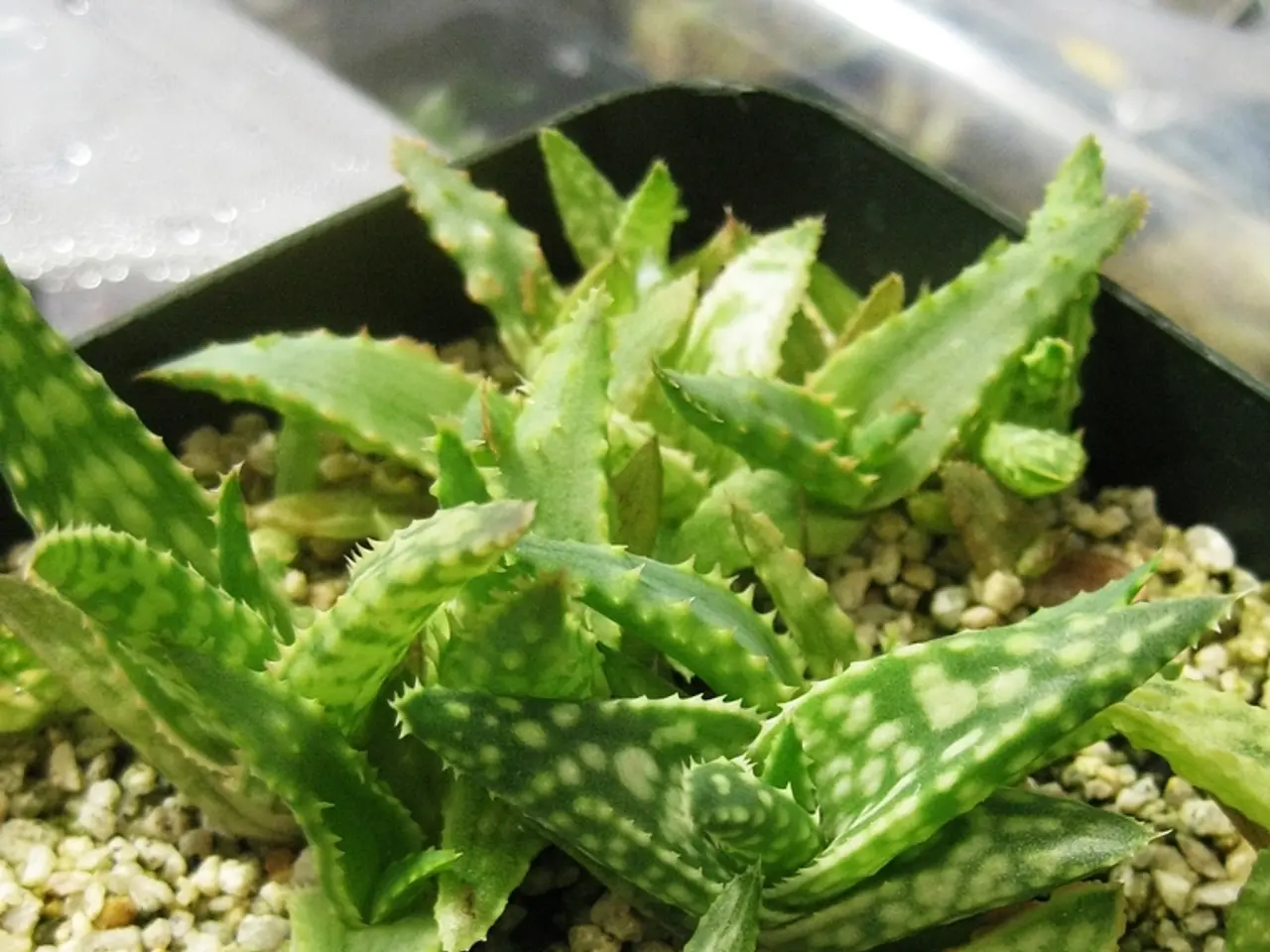The advantage of using Aloe Vera in hair care products
Aloe Vera, a succulent plant native to Africa, has been a staple in various industries for centuries due to its soothing, anti-inflammatory, and healing properties. Known as the "plant of immortality" by ancient Egyptians, Aloe Vera has been used by historical figures such as Nefertiti, Cleopatra, and Alexander the Great's troops for skin hydration and wound treatment.
Today, Aloe Vera continues to be a valuable natural ingredient, particularly in the cosmetics and personal care industry. Its high concentration of water keeps hair hydrated and soft, while stimulating hair growth by promoting circulation and making hair strands stronger, less prone to breakage. Aloe Vera also combats oiliness by unblocking hair follicles and facilitating the balance of oiliness.
Scientific research has proven the effectiveness of Aloe Vera in numerous applications, leading to its widespread use by the global pharmaceutical, food, and cosmetics industries. Consumer interest in beauty products based on natural ingredients is rising, leading to a predicted global growth of 7% in the aloe vera market between 2021 and 2026.
The aloe vera industry has seen significant growth in recent years, particularly in the cosmetics and personal care sector. For the next five years, certain countries can be identified as particularly promising growth markets for Aloe Vera as a main component in cosmetic products. Here is a well-founded projection, considering current trends, market analyses, and consumer behavior:
Global and Regional Markets with Potential
Asia-Pacific Region
- China: The demand for natural, plant-based cosmetics is growing rapidly, driven by a rising middle class and increased environmental awareness.
- India: Traditional Ayurveda cosmetics are booming, and Aloe Vera is a key ingredient. The market for natural cosmetics is growing exponentially.
- Südkorea and Japan: Both countries are leaders in innovative skincare. Aloe Vera is already present in many products, but the trend towards "Clean Beauty" will further increase demand.
- Southeast Asia (Indonesia, Thailand, Vietnam): Growing environmental awareness and the demand for affordable natural cosmetics make these markets attractive.
America
- USA: The market for natural cosmetics is already large, but the focus is shifting further towards bio-certified and sustainable ingredients like Aloe Vera.
- Brazil: As one of the world's largest Aloe Vera producers, there is a strong local demand and export opportunities.
- Mexico: The country is leading in Aloe Vera production, and the local cosmetics industry is increasingly relying on natural raw materials.
Europe
- Germany: Leading in the field of "Clean Beauty" and natural cosmetics. Aloe Vera is a popular ingredient in many products.
- France and Italy: Here, there is a strong tradition in the luxury cosmetics sector, which is increasingly focusing on plant-based ingredients.
- Nordic Countries (Sweden, Denmark, Norway): The trend towards vegan and sustainable cosmetics is particularly strong here.
- Great Britain: Despite Brexit, the market for natural cosmetics remains dynamic.
Middle East and Africa
- Saudi Arabia and the United Arab Emirates: The demand for high-quality natural cosmetics, including Aloe Vera, is increasing.
- South Africa: Rapid growth in the market for natural skincare products.
Regions for Innovation and Investment
In addition to the aforementioned countries, Australia and New Zealand (with a strong "Green Beauty" trend) and Canada (with a growing market for organic cosmetics) are also particularly promising.
Drivers for Growth
- Health and Environmental Awareness: Consumers are seeking safe, natural alternatives to synthetic ingredients.
- Social Media and Influencers: Trends towards DIY beauty and natural cosmetics spread quickly.
- Local Production: Countries with high Aloe Vera production (e.g. Mexico, Brazil, India) can optimize costs and delivery times.
- Regulatory Support: Stricter regulations for chemicals in the EU and the USA promote the shift towards plant-based alternatives.
Conclusion
Particularly noteworthy are China, India, South Korea, Japan, the USA, Brazil, Mexico, Germany, France, the Nordic countries, and the Gulf states. In these countries, an above-average growth of Aloe Vera usage in cosmetic products in the next five years is very likely. Companies that invest early in these markets, develop innovative products, and focus on sustainable cultivation will have the best chances.
Moreover, Provital's latest eBook, "Cosmetic Cosmos", features three product suggestions that use Aloe Vera Gel Eco as their main active ingredient, with innovative narratives that appeal to consumers passionate about zodiac signs.
Read also:
- Understanding Hemorrhagic Gastroenteritis: Key Facts
- Stopping Osteoporosis Treatment: Timeline Considerations
- Tobacco industry's suggested changes on a legislative modification are disregarded by health journalists
- Expanded Community Health Involvement by CK Birla Hospitals, Jaipur, Maintained Through Consistent Outreach Programs Across Rajasthan








